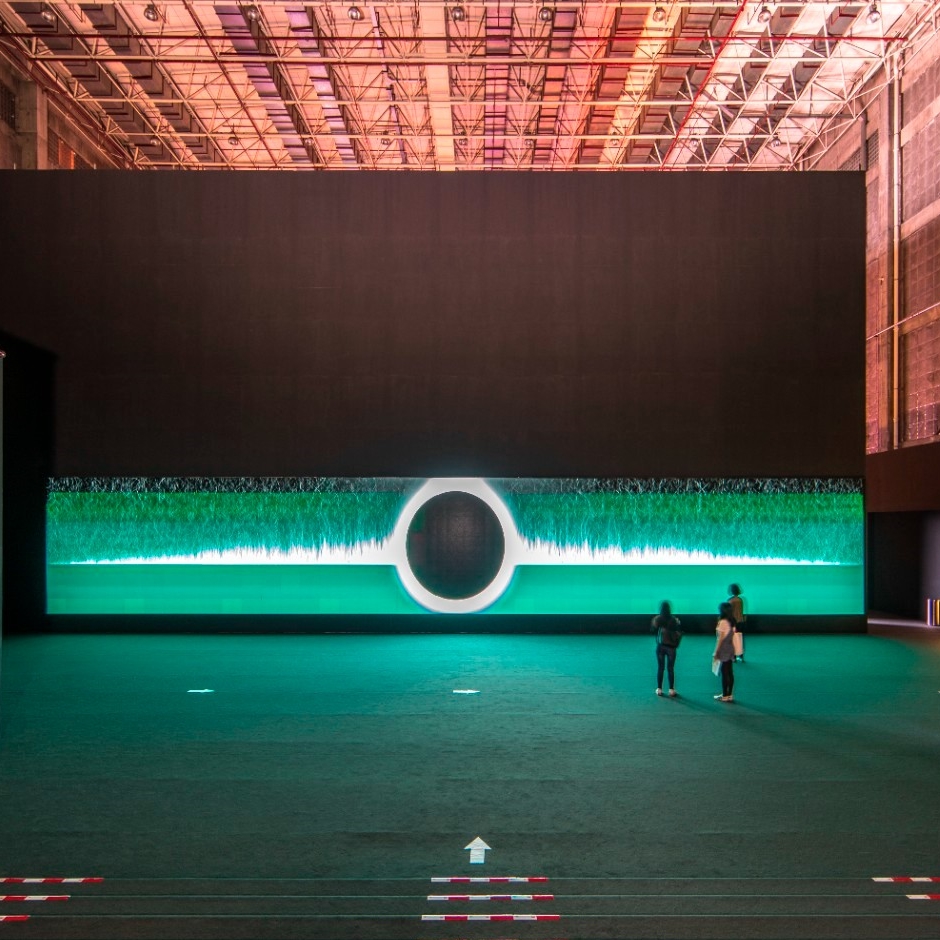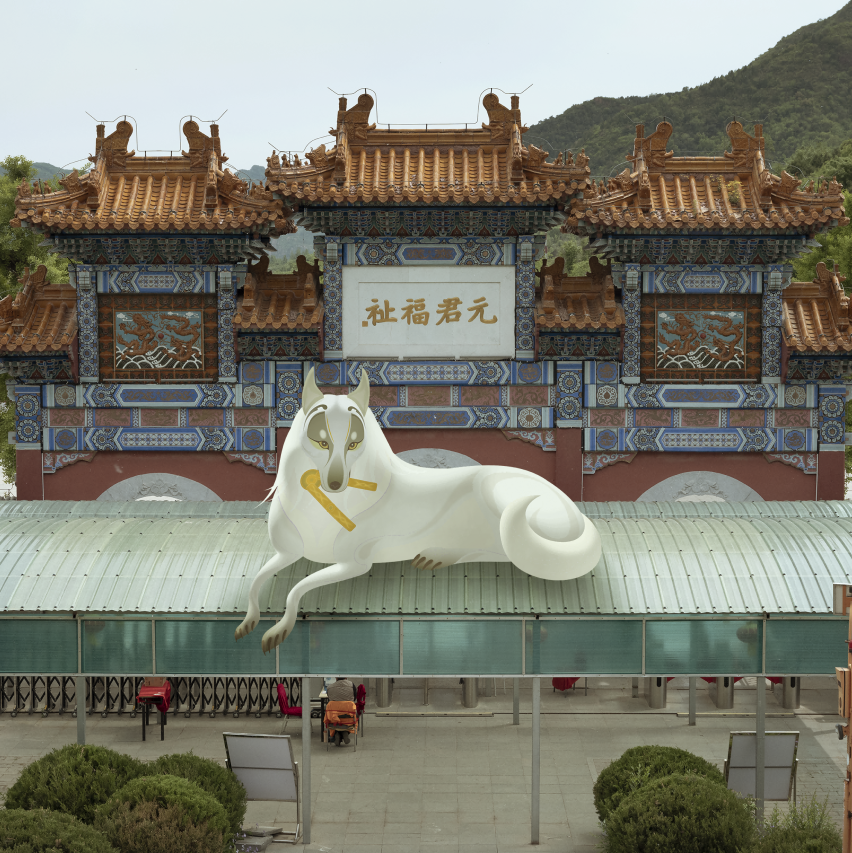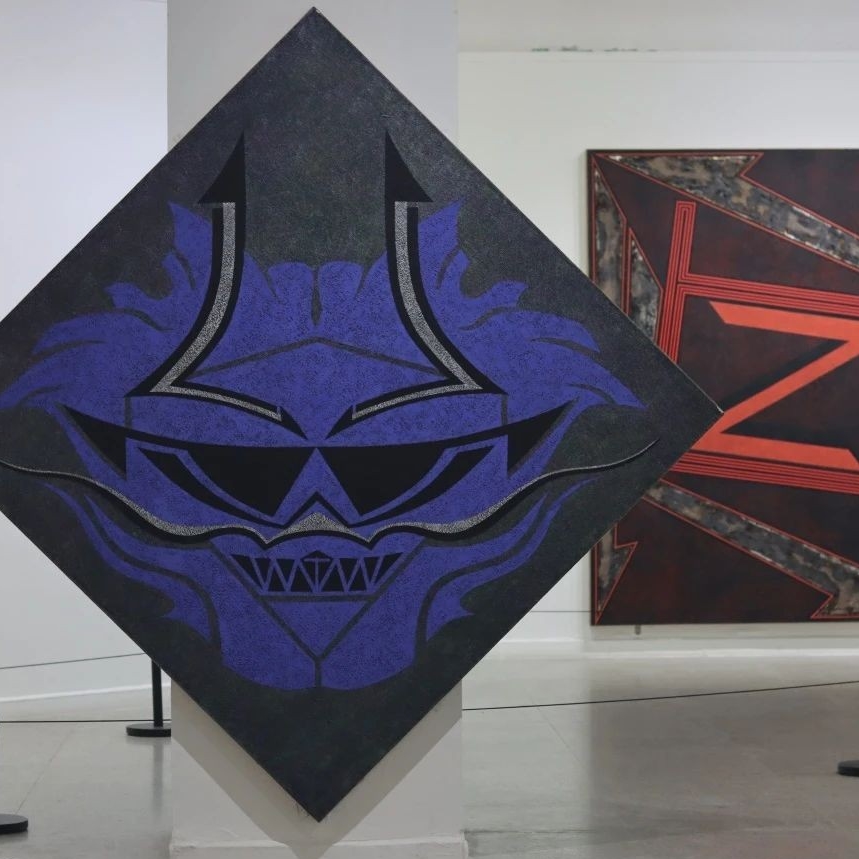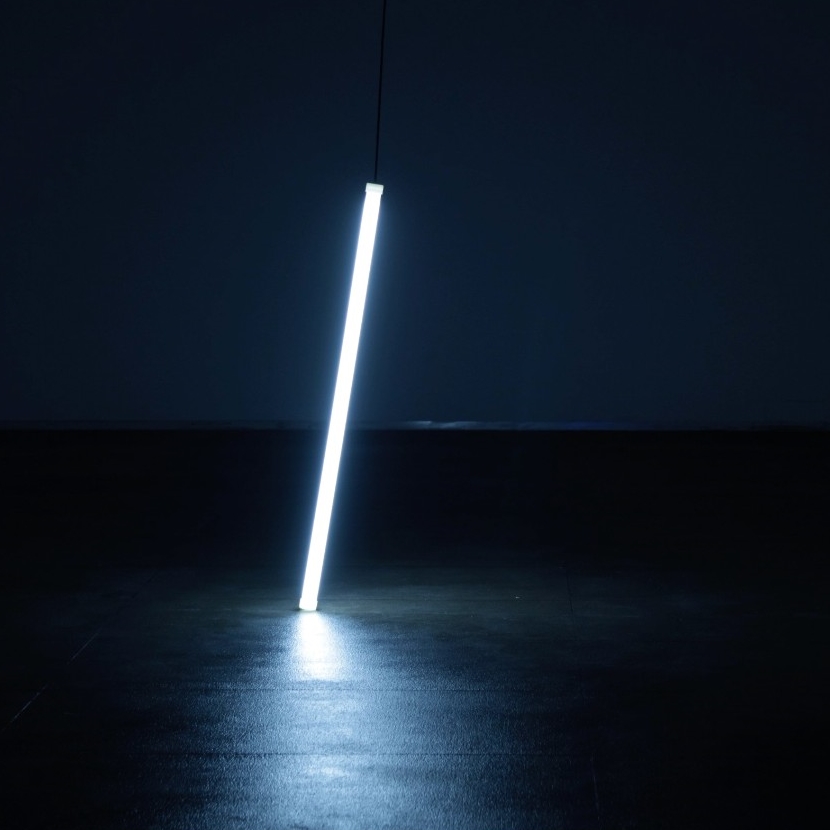 Workshot of Jacques Tenenhaus
Workshot of Jacques Tenenhaus
Jacques Tenenhaus was born in Paris in 1947. He belongs to the generation of artists born just after the Second World War who took part in the 1968 renewal of ideas. After having studied at the Cours Charpentier in Montparnasse he became, in 1965, the student of the painter Goetz. In 1971, he obtained a bachelor’s degree in philosophy. In 1974, he created a painting and ceramic workshop for children and adults. Both a painter and a watercolorist, Jacques Tenenhaus started to explore sculpture. His first art work in stone is dated 1969, it is a self-portrait “A Teenage Face”. In several of his works, sensual lines and amplified features announce the style of his future creations. The 80s are important for the evolution of his style. He began to work with clay. His work on couples looked at the limits of a coalescing loving relationship. Of the body, only the following associations: Face-Hand, Face-Trunk and Face-Arm-Hand, remain. The “Gastropods” series illustrates that concept. Since the "Gastropods", Tenenhaus has always tried to translate, through sculpture, his hidden emotions. The artwork concept, as well as its title, only appears after its realization. 1986 became the "Peelings" period, a quest for the essential. After a complete break from in his work from 1989 to 1998, Jacques Tenenhaus returned to sculpture. He created a large number of bronze artworks. Having achieved the “coalescing couple” he sought, from then on, to display the building of a relationship. Frequently the artist’s work s a setting for him as well as a stage for the important steps of his life and the sharing of his emotions.
 Potrait of Jacques Tenenhaus
Potrait of Jacques Tenenhaus
CAFA ART INFO: Being a descendant of Jews born in France after World War II, your family has experienced painful memories. “Trauma” and “reflection” have become themes that the Jewish people can never avoid. What prompted you to become an artist?
Jacques Tenenhaus: I started making sculptures and drawings around the age of 15 or 16, like many teenagers who start writing a diary. But I preferred to draw or carve out my emotions rather than to put them into words; sculpture is writing without words, which is more natural to me, and more discreet.
My grandparents were killed in German extermination camps during World War II, a trauma my mother never got over during her life, and the fact that she ended up in a psychiatric hospital is a hidden pain for me.
My young father was hidden by his family in a small village called Crest, in France, where the villagers showed my young father some humanity and did not reveal his Jewish identity; my father was protected by the villagers and he survived.
In my childhood, my parents were very traditional Jews. For all Jews in the world, the persecution they experienced is part of our history, but it is also part of what we find difficult to understand on a human level. Very quickly I stopped believing in the existence of God because he allows human beings to allow abominations.
So I do not think my work is particularly Jewish, I want him to be particularly human.
When I was 25 years old, I was in a party, in New York City and a mysterious Indian lady came up to me, and she asked me to show her my hand and she told me that I had studied sculpture with the famous sculptor PRAXITELE in a previous life, probably in the 4th Century B.C. He was the first Greek sculptor in Art History to depict a female nude body. That's why I did not need to study sculpture. By the way, my first sculpture was made of marble, the same way as it was practiced in Greece during antiquity. I don't believe in fortune telling, but this is an anecdote about me.
Creating sculpture is a natural thing for me, because sculpture is my writing, my language, my diary!

Jacques Tenenhaus, The rope, Bronze, edition of 8, 1980, 43 × 35 × 22 cm.

Jacques Tenenhaus, The love cage, Bronze, edition of 8, 1980 , 96 × 45 × 34 cm.
CAFA ART INFO: You have emphasized the influence of clay on your creations in your catalogue. In Western sculpture tradition, clay sculptures/clay are generally regarded as unfinished sketches. Your finished sculptures are mainly presented in bronze. How have you achieved the material transformation in such a process? You have also used wood and marble as sculpture materials. Why did you finally choose bronze sculpture as your main creative medium? And you have also turned to the Japanese Raku medium in your recent works, why?
Jacques Tenenhaus: Since I studied sculpture with PRAXITELE in the 4th century B.C, I think this explains why I initially created my sculptures in marble.(laughing)
Later, in Paris, I had the opportunity to show my work to "a real sculptor" with a long white beard but I do not remember his name. He told me that although my sculptures were in marble, they were models and that I should make them in clay. When we are young, we actually receive very little relevant advice that really helps me, but I am very grateful tothis anonymous man, for showing me theway to follow.
As you know, when we cut a piece of stone, the sculpture is already sealed in the stone and our job is just to reveal it.
But when you work with clay, you start with nothing. You have to build everything; clay is soft and flexible while stone is hard and resistant. Another thing I think is that clay puts the artist in place of God, clay connects life and death, the beginning and the end of man. As it says in the Bible, "God took a handful of clay,created a man in his own image, breathed on him, and the man lived." But on this point, unfortunately, I haven't succeeded yet (laughing)
My sculptures are first made from clay; bronze is simply a replica of the original sculpture. The bronze material is the medium that makes the sculptures immortal.
In addition to sculpture, I also paint.
Raku, an ancient and traditional Japanese ceramic technique, helps me to combine both sculpture and painting in the same piece. Raku has unique natural cracks, which show the fragile side of toughness, and in fact, also represents the destiny of human beings.
 Workshot of Jacques Tenenhaus
Workshot of Jacques Tenenhaus
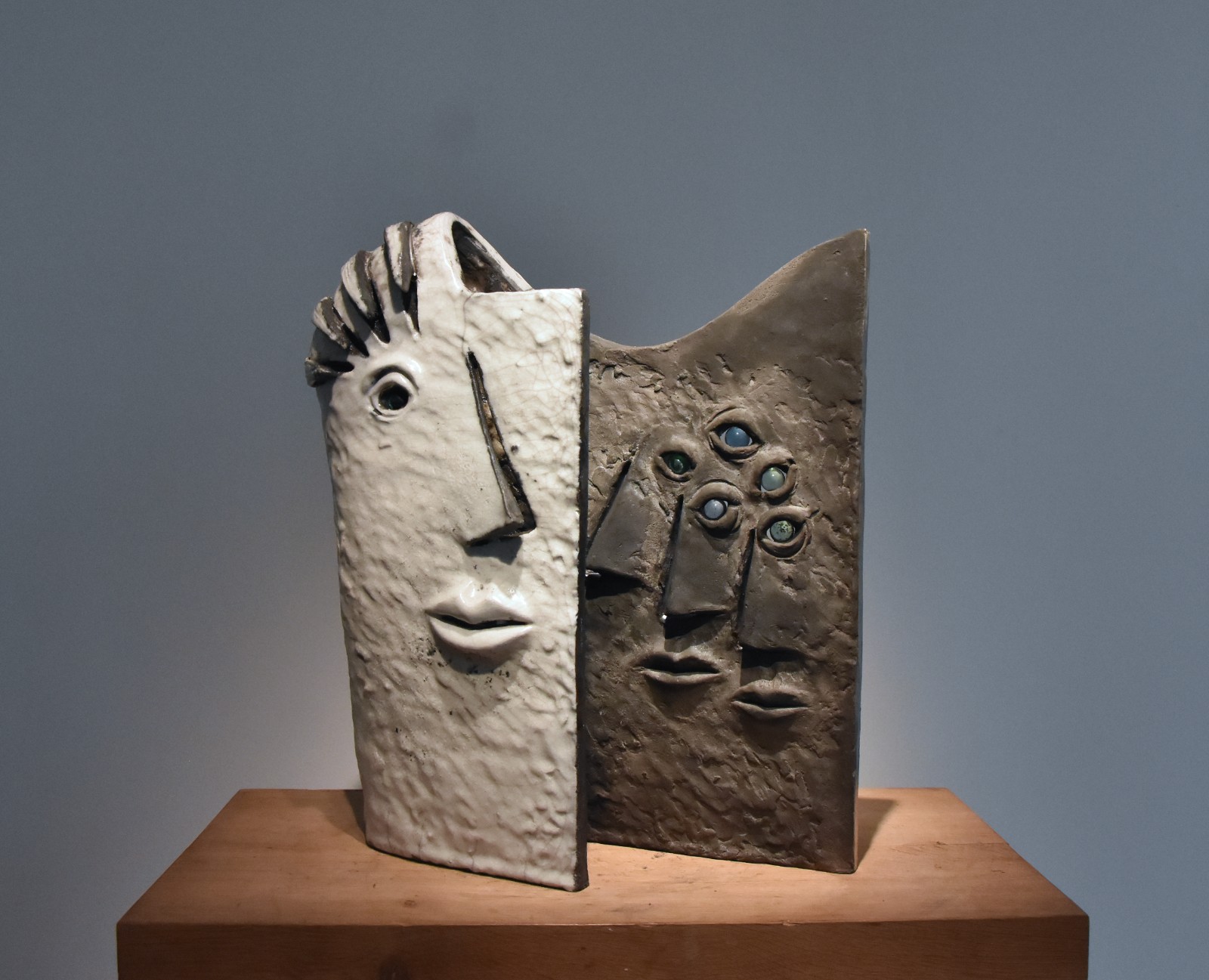 Jacques Tenenhaus, The crowd, Ceramic, Raku, 2022, 35 × 10 × 47 cm.
Jacques Tenenhaus, The crowd, Ceramic, Raku, 2022, 35 × 10 × 47 cm.
CAFA ART INFO: Being an artist who grew up and studied in the wave of post-war French philosophy, you have been profoundly influenced by Nietzsche’s philosophy. Could you please talk about the inspiration and influence of post-war French philosophy on your creations?
Jacques Tenenhaus: After World War II, people were in a desperate state of mind as Nietzsche revealed : God was dead and people began to revalue everything.
However, I have always been influenced by psychoanalysis, if psychoanalysis is also a philosophy.
My psychotherapist worked on me for thirty years healing and analyzing me. First I feared that psychoanalysis would prevent me from creating, but this was not the case.
The emotional language in therapy is different from writing, which has only forms. I believe that forms come before words; they cannot be named. Creating is an activity that draws forms and this energy comes from our lives, not words.
When I studied philosophy I was interested in Freud, Georges Goedecke, Lacan, and other forms of therapy who have influenced my life and the way I create.

Jacques Tenenhaus, Memory for Hervé, Bronze, edition of 8, 1998, 70 × 21 × 21 cm.
CAFA ART iNFO: ”Heterotopia" is one of the important themes in your artistic creations, and the characters that you have created are presented in various forms of alienation. What does this alienation or mutation mean to you? What is it conveying?
Jacques Tenenhaus: What Foucault calls heterotopia is for me a utopia that actually exists in reality, just as children create their own homes or theaters.
I want my sculpture to be a field of heterotopia that originates in the immaterial world and takes form in our visible world. To rebuild a spiritual home in this field is a kind of homecoming for the mind. This gave birth to the gastropod series and for me this idea can be linked to the history of the Jews because they can be compared to snails with no shells. The Jews even in their own homeland can sometimes feel very insecure.
In the sculpture “The rope", we can imagine somebody struggling from depression or drowning. There is only a hand holding the rope and a mouth looking for air to breathe. This allows the viewer to see the efforts to escape from depression..
These alienated bodies are also a kind of transcendence of my own Jewish identity, a body that has gone through suffering, and can only go beyond the Jewish identity and memory in the midst of continuous alienation, in the hope that it can be just like a concrete human being who defends the values such as love, such as justice, such as friendship, and so on.
I hope to influence people to be positive through suffering, a power that comes from defending and upholding humanity and love.

CAFA ART INFO: In 1974, you and your wife, Christiane TENENHAUS, founded an art school in the 18th arrondissement of Paris. What aspects did the curriculum system and teaching content that you advocate focus on? What do you think is the current state of art education in France and Europe? What do you think needs to be developed?
Jacques Tenenhaus: I believe that creative activity is as natural and necessary as breathing.
Inspiring students to let their artistic creativity live and helping them to find the most suitable outlet for their expressions, painting or sculpting, free and unrestricted, everyone can work according to their rhythm, either two hours a week or all the time.
I created an art school in the hope of being able to make this artistic action accessible to everyone, without trying to professionalize them.
For me, art schools in France have forgotten that the most important thing about creating is the Action, rather than focusing on the interpretation of concepts.
I think art schools should allow students to find their own language and put it into practice.

Jacques Tenenhaus, Peeling number 4, Bronze, edition of 8, 1986, 29 × 20 × 18 cm.
CAFA ART INFO: Love and death run through human life and they are eternal themes of human beings. How do you incorporate and present your thinking on life and death, love and friendship in your creations?
Jacques Tenenhaus: People who realize their certainty of death will turn to the question of what kind of life is more meaningful. Love is a supreme emotion, more powerful than hate or death, and even love transcends death.
My work is my diary, and when someone I love passes away, it will be recorded and expressed in my sculptures. Love can give birth to tender and powerful works.
My sculptures are an impenetrable home, a bronze material that helps me to transcend time and keeps these precious moments in our lives alive forever.
 Jacques Tenenhaus, Young girl, Bronze, edition of 8, 1988, 97 × 48 × 29 cm.
Jacques Tenenhaus, Young girl, Bronze, edition of 8, 1988, 97 × 48 × 29 cm.
CAFA ART INFO: In 2018, you opened your own gallery space, Atelier Veron, in Montmartre, Paris, France, and presented to the audience the works around Art Brut by “crazy” artists who appear to be alternative and marginal in the contemporary art environment. Could you please talk about the funding sources for your gallery, selection criteria for artists, and recent exhibition plans?
Jacques Tenenhaus: My biggest regret in life is that I was not able to heal my mother, who never got over the trauma of the Holocaust. I remember when I was a child, my father took me to visit my mother in apsychiatric hospital, where she was making sketches of people dancing as lightly as the bride in Chagall's paintings, as if the world was so beautiful. I have always treasured her drawings, which is perhaps why I was so moved by the "crazy" artists who appeared to be otherworldly and marginalized, and perhaps I wanted to help these artists to heal my mother.
Thanks to the full support of my company "FORMES et SCULPTURES", I had the opportunity to create an art gallery "L'ATELIER VERON" in Paris. My wish was to show the work of people who are excluded from the contemporary art world. By showing their work (we can call it "Outsider Art" or "Singular Art"), I want to give a chance to the artists who are excluded from the system to be at the center, those who are self-taught artists. Of course, the gallery also includes works by artists from major art schools, such as Song Wanrong, whose works reflect the situation of women in today's society.
Criteria for the selection of artists? As Deleuze said, we are artists because we can do nothing else in our lives, my work is not about pleasing others, my work is the only necessary thing in my life.
This necessity is my criterion for choosing artists. I hope to see this necessity in the artists, and this determination and passion they have for creating art will move me very much, and I will do my best to help the artists, such as providing studios and collecting their artworks so that they can continue to create.
The works of the artists we exhibit must be authentic and unique so that we can feel the humanity in their work.
Every year, our gallery exhibits the work of about a dozen different artists.
We want to make the invisible visible, and this is the passion of ATELIER VERON GALLERY.

Jacques Tenenhaus, The dreamer, Bronze, edition of 8, 2000, 100 × 30 × 12 cm.
CAFA ART INFO: You have multiple identities as you are not only an artist, but also an educator, gallerist, poet, etc.. By combining creation, teaching, and gallery operations, what are your attitudes and concepts towards the development of contemporary art? What do you think of the contemporary art environment in France? Are you also involved in collecting?
Jacques Tenenhaus: The French art market is diverse, with some large galleries working with museums and some well-known artists.
On the other hand, there are many artists who work out of necessity, whose work is excellent but who find it difficult to show their work and, of course, to make a living. My gallery is a hospitable place for these artists.
Personally, the commercialized model of the gallery has a very disturbing relationship with art. I worked with a few galleries when I was younger, but they expected me to create the best-selling work, and I believe that good art is definitely not about pleasing the market.
This made me want to become financially independent by creating my art school,The Atelier Peinture Céramique, which I founded in Paris and which still exists today, and which allowed me to be independent of these institutions from a very early age.
The Atelier Veron Gallery, which I founded, always puts the artist first. Werespect the artist's own creativity, and the artist creates works out of the necessity of the creative activity itself , because I believe this type of work can move people.
Regarding the collection, I would like to thank my gallery for allowing me to collect the works of the artists I admire and exhibit regularly, allowing me to respect and support the artists' creativity while maintaining a good friendship with them.
 Jacques Tenenhaus, Under the trees, Ceramic, Raku, 2022, 48 × 46 × 15 cm.
Jacques Tenenhaus, Under the trees, Ceramic, Raku, 2022, 48 × 46 × 15 cm.
CAFA ART INFO: Were there any international sculpture artists that have profoundly influenced and inspired you? What is your comprehension of the contemporary art environment and artists in Asia (or) China? What kind of cooperation and breakthroughs do you expect to achieve through international exchanges?
Jacques Tenenhaus: When I was younger, I used to be so jealous of Picasso's work because I didn't know how I was going to exist after him!
Aside from that joke, I love Brancusi. When I visited his work at the Muséed'Art Moderne in Paris, I used to try to hide from the museum's guards to touch Brancusi’s sculptures. Then there was Henry Moore, a great English sculptor, and Giacometti, who I wondered if he really knew what he was doing? As you know, he asked models to retain one gesture completely still for hours while he painted or made sculptures. As you can see from the results, why did he need to have models ?
Of course, the admirable Rodin was an "industrial" sculptor, far different from those who created their own cut marbles, as he was very good at letting others work for him, like Camille Claudel. I was impressed by the work of the Spanish sculptor CHILIDA, whose interventions in natural spaces allow the sea breeze to move freely throughthe sculptures. And of course there are Michel Ange's seemingly unfinished sculptures of prisoners, which give us a sense of the great effort these prisoners have made to free themselves from the things that enchain them.
In my opinion, Chinese Contemporary Art is very powerful, Chinese Contemporary Art draws from an extremely rich tradition of art and has a strong vitality, Chinese Artists' works are very ingenious and strong; Chinese Artists can create a dialogue with Western Contemporary Art, enrich the context of Western Contemporary Art, and can make the Art glow with a different luster.
For me, Art is a universal language that is both personal and universal. I am honored and looking forward to the opportunity to show my work to the Chinese public and to move them, and I hope that my gallery Atelier Véron in Paris will become a hospitable place to welcome Chinese artists, and I hope that I can bring more French artists to China for art exchanges and cooperation.
Text and Image Courtesy of the Artist, edited by CAFA ART INFO.


